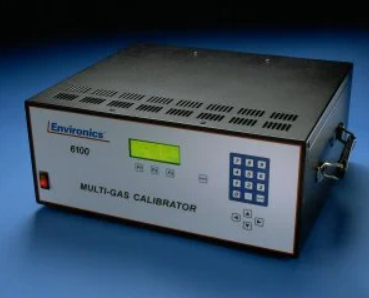Multi-gas analyzers are an essential part of ambient monitoring applications, particularly those where low-level concentrations of specific species may have a significant impact on air quality.

Image Credit: Environics Inc.
Multi-gas analyzers are employed in a diverse array of applications, ranging from workplace health and safety to environmental monitoring.
These analyzers are subject to interference from numerous factors, however, potentially leading to inaccuracies. This article outlines the significance of multi-gas calibration, alongside a discussion of the key benefits and important features of multi-gas calibration devices.
The Importance of Multi-Gas Detection
Without the use of specially designed optical or electrochemical gas detection equipment, many gases may be left undetected. This could be lethal in both indoor and outdoor spaces, as poor levels of ambient air quality have been found to contribute to an increasing number of fatalities each year.
The effective, proper use of multi-gas analyzers has the potential to legitimately save lives by offering data-driven insight into environmental science and process control applications.
Multi-Gas Calibration Considerations
Multi-gas calibration is an essential element of any robust routine equipment maintenance program. It is also a key factor in ensuring that workers are kept safe in hazardous environments.
Fixed and portable analyzers are prone to chemical degradation or unavoidable calibration drift as a result of gradual electronic deterioration, however. A robust multi-gas calibration regime can help to address this drift, ensuring that analyzers continue to function at optimal levels.
Multi-gas calibration is required in applications where analyzers are regularly subjected to extreme environmental conditions, which may have a negative impact on performance.
For example, these conditions may include temperature, humidity, vapors, airborne particles, high concentrations of target gases, or the presence of sensor inhibitors and poisons.
Multi-gas calibration should also be carried out if a detector is dropped on a hard surface, exposed to water, or handled frequently enough to impact key electronic components.
Key Features of Multi-Gas Calibration Instruments
It is essential that multi-gas calibration devices are as accurate as possible – something that the Environics® Series 6100 Computerized Multi-Gas Calibration System excels at. The Series 6100 is a pioneering computer-controlled instrument that can facilitate dynamic multi-gas calibration with ambient air analyzers.
The Series 6100 is able to carry out zero, precision, multi-point, and span calibrations automatically while employing NO, NO2, SO2, CO, 03, hydrocarbons and a range of other important gases.

Image Credit: Environics Inc.
The instrument can also complete multi-gas calibration remotely through the use of contact closures or the instrument’s RS232 serial data interface.
The Series 6100 utilizes user-friendly, accessible and interactive software. This software is designed to make training technicians simpler and less time-consuming, ensuring that multi-gas calibration is comprehensive and that results are provided with a very small margin of error.
Manual computation is eliminated, with automatic calculation of dilution and span gas flows completed based on the commanded concentration. This automation also means that the transition from point to point can be completed rapidly.
Mass flow controller calibration data is stored internally, helping enable enhanced accuracy and streamlined multi-gas calibration when used in the field. Environics offers a range of multi-gas calibration products, ensuring that the right instrument is available for almost any project.
Multi-Gas Calibration with Environics
Effective multi-gas calibration is essential in ensuring that multi-gas analyzers are functioning correctly, in turn ensuring the maintenance of a safe working environment. Environics offers a wide range of easy-to-use, accurate products that can result in a very small margin of error.
Acknowledgments
Produced from materials originally authored by Rachel Stansel from Environics.

This information has been sourced, reviewed and adapted from materials provided by Environics, Inc.
For more information on this source, please visit Environics, Inc.